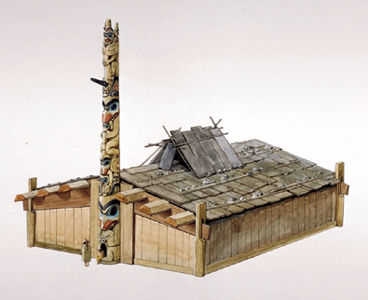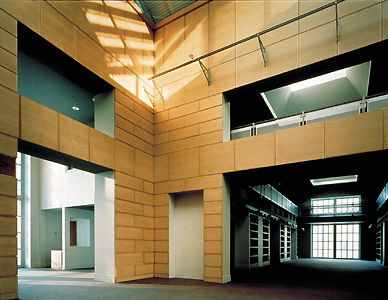Browse "Arts & Culture"
-
Macleans
Arcade Fire (Profile)
People in tuxedos fighting over hot dogs. That's the indelible image Win Butler and Régine Chassagne took home from their first trip to the Grammy Awards back in 2006. Their group, Arcade Fire, had received two nominations.This article was originally published in Maclean's Magazine on February 21, 2011
"https://d2ttikhf7xbzbs.cloudfront.net/media/media/48259ffb-d1a9-4bf2-948a-f38c1aad1fd9.jpg" // resources/views/front/categories/view.blade.php
https://d2ttikhf7xbzbs.cloudfront.net/media/media/48259ffb-d1a9-4bf2-948a-f38c1aad1fd9.jpg
-
Article
Archambault Musique
Archambault Musique. Business concern established in Montreal in 1896 by Edmond Archambault. It began as a sheet music store at the corner of Ste-Catherine and St-Hubert streets and moved later to Ste-Catherine and Berri.
"https://development.thecanadianencyclopedia.ca/images/tce_placeholder.jpg?v=e9dca980c9bdb3aa11e832e7ea94f5d9" // resources/views/front/categories/view.blade.php
https://development.thecanadianencyclopedia.ca/images/tce_placeholder.jpg?v=e9dca980c9bdb3aa11e832e7ea94f5d9
-
Article
Architectural Competitions
An architectural competition occurs when designs are prepared by two or more architects for the same project, on the same site, at the same time. Some competitions are open, meaning that any architect within a designated area is eligible to enter.
"https://d2ttikhf7xbzbs.cloudfront.net/media/media/5c4b1345-b087-4d56-b02f-6e1724dc2503.jpg" // resources/views/front/categories/view.blade.php
https://d2ttikhf7xbzbs.cloudfront.net/media/media/5c4b1345-b087-4d56-b02f-6e1724dc2503.jpg
-
Article
Architectural History: 1759-1867
At least until the 1830s, and even later in some regions, the architecture of the English regime was polarized between Georgian forms, symbolizing British imperial order, and the various regional tendencies, already established or in the process of formation throughout the territory.
"https://d2ttikhf7xbzbs.cloudfront.net/media/media/7f8a231d-ea6a-4553-90b3-ed2485d0e39d.jpg" // resources/views/front/categories/view.blade.php
https://d2ttikhf7xbzbs.cloudfront.net/media/media/7f8a231d-ea6a-4553-90b3-ed2485d0e39d.jpg
-
Article
Architectural History: 1914-1967
On 3 February 1916 fire broke out on Parliament Hill in Ottawa. The following morning all that remained of the Centre Block (1859) was the famous pinnacled library and a few walls of rubble. Canada was at war with Germany, its citizens in uniform, but replacement began almost immediately.
"https://d2ttikhf7xbzbs.cloudfront.net/media/media/946336b9-7f2d-4da0-9a9e-15462d344cd2.jpg" // resources/views/front/categories/view.blade.php
https://d2ttikhf7xbzbs.cloudfront.net/media/media/946336b9-7f2d-4da0-9a9e-15462d344cd2.jpg
-
Article
Architectural History: 1967-1997
EXPO 67 reflected to Canadians and to all participating countries the triumph of a diverse, eclectic architectural modernism.
"https://d2ttikhf7xbzbs.cloudfront.net/media/media/f9843a39-7f5d-400f-bd85-c3da838d4bc3.jpg" // resources/views/front/categories/view.blade.php
https://d2ttikhf7xbzbs.cloudfront.net/media/media/f9843a39-7f5d-400f-bd85-c3da838d4bc3.jpg
-
Article
Architectural History of Indigenous Peoples in Canada
Before the arrival of Europeans, Indigenous peoples in Canada had their own building traditions. Dwellings and structures differed vastly from nation to nation, depending on their purpose and function. Building traditions also reflected important aspects of Indigenous peoples’ respective cultures, societies, geographies, environments and spiritual beliefs. This article provides an overview of the main types of dwellings and structures used by Indigenous peoples in the Arctic, Subarctic, Northwest Coast, Plateau, Plains and Eastern Woodlands.
"https://d2ttikhf7xbzbs.cloudfront.net/media/media/0d0ebbc3-f07e-4021-9afb-cfb757d2c780.jpg" // resources/views/front/categories/view.blade.php
https://d2ttikhf7xbzbs.cloudfront.net/media/media/0d0ebbc3-f07e-4021-9afb-cfb757d2c780.jpg
-
Article
Architectural History: the French Colonial Regime
Architecture under the French colonial regime was characterized less by its achievements than by its unfulfilled ambitions. Caught between ideals nurtured in France during the classical period and the harsh climate of New France, architecture gradually came to reflect local resources. At first, the building materials and craftsmen available represented obstacles to what otherwise would have been the mere transposition of metropolitan models onto Canadian soil. Eventually, the mother country's original designs were "Canadianized" and bequeathed to later generations essentially in the form of historical memory.
"https://d2ttikhf7xbzbs.cloudfront.net/media/media/dc54dcff-f3dd-4f2c-b5ec-0ad5078ee2b2.jpg" // resources/views/front/categories/view.blade.php
https://d2ttikhf7xbzbs.cloudfront.net/media/media/dc54dcff-f3dd-4f2c-b5ec-0ad5078ee2b2.jpg
-
Article
Architectural Practice
The process will vary in complexity and in the length of time it takes to complete the facility. The project may be divided into a number of subprojects, but each of these will roughly follow the stages outlined above. The knowledge and expertise required at each stage also varies.
"https://d2ttikhf7xbzbs.cloudfront.net/media/media/9b827739-37a4-4141-8f97-535abb924a30.jpg" // resources/views/front/categories/view.blade.php
https://d2ttikhf7xbzbs.cloudfront.net/media/media/9b827739-37a4-4141-8f97-535abb924a30.jpg
-
Article
Architecture
Classic definitions of architecture hold that it is "the mother of the arts." Today architecture is more likely to be defined, not as an art, but in technical terms, or as an expression of a given society's values. What we refer to as architecture can include structures that are modest and ephemeral as well as monumental buildings; often the distinction between architecture as a high art and architecture as a reflection of simple vernacular traditions seems irrelevant to the appreciation and experience of built form. The late American architectural historian Spiro Kostof called for "a more inclusive definition of architecture and, consequently, a more democratic view of architectural history." This democratic approach to defining the term architecture seems to suit the Canadian tradition, where the story of our built environment has been written by artists, craftspeople and builders whose origins, backgrounds and reasons for building have been very different.
"https://d2ttikhf7xbzbs.cloudfront.net/media/media/9b827739-37a4-4141-8f97-535abb924a30.jpg" // resources/views/front/categories/view.blade.php
https://d2ttikhf7xbzbs.cloudfront.net/media/media/9b827739-37a4-4141-8f97-535abb924a30.jpg
-
Article
Architecture of Art Galleries in Canada
While the Canadian Heritage Information Network (CHIN) lists nearly 400 art and leisure museums, Canada's major institutions are relatively few in number and often of relatively recent vintage.
"https://d2ttikhf7xbzbs.cloudfront.net/media/media/07073232-3548-469e-941d-a60b8ebcc4a6.jpg" // resources/views/front/categories/view.blade.php
https://d2ttikhf7xbzbs.cloudfront.net/media/media/07073232-3548-469e-941d-a60b8ebcc4a6.jpg
-
"https://development.thecanadianencyclopedia.ca/images/tce_placeholder.jpg?v=e9dca980c9bdb3aa11e832e7ea94f5d9" // resources/views/front/categories/view.blade.php
https://development.thecanadianencyclopedia.ca/images/tce_placeholder.jpg?v=e9dca980c9bdb3aa11e832e7ea94f5d9
-
Article
Archives de folklore
Archives de folklore. The name refers, at one and the same time, to actual archives, where the oral traditions of the French-speaking inhabitants of North America are collected and preserved, and to a collection of works specializing in this field, namely the volumes Archives de folkore.
"https://development.thecanadianencyclopedia.ca/images/tce_placeholder.jpg?v=e9dca980c9bdb3aa11e832e7ea94f5d9" // resources/views/front/categories/view.blade.php
https://development.thecanadianencyclopedia.ca/images/tce_placeholder.jpg?v=e9dca980c9bdb3aa11e832e7ea94f5d9
-
Article
Archives
Repositories of documents of historical interest, usually in written, sound-recorded, or pictorial form.
"https://development.thecanadianencyclopedia.ca/images/tce_placeholder.jpg?v=e9dca980c9bdb3aa11e832e7ea94f5d9" // resources/views/front/categories/view.blade.php
https://development.thecanadianencyclopedia.ca/images/tce_placeholder.jpg?v=e9dca980c9bdb3aa11e832e7ea94f5d9
-
Article
Arion Male Voice Choir
Arion Male Voice Choir. Possibly Canada's oldest existing male choir devoted to the singing of secular music. It was founded in February 1893 (with initial, informal activities beginning in 1892) as the Arion Club of Victoria (BC) and gave its first concert 17 May 1893 at Institute Hall.
"https://development.thecanadianencyclopedia.ca/images/tce_placeholder.jpg?v=e9dca980c9bdb3aa11e832e7ea94f5d9" // resources/views/front/categories/view.blade.php
https://development.thecanadianencyclopedia.ca/images/tce_placeholder.jpg?v=e9dca980c9bdb3aa11e832e7ea94f5d9
